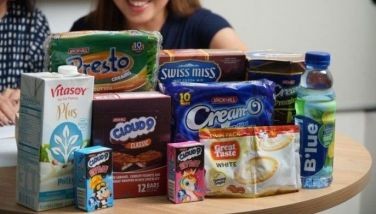When teachers become owners
May 30, 2005 | 12:00am
The initial computations for Preparatory Camp: A School for Early Learners were done on a paper napkin during a birthday party.
"Based on the computations of my banker-husband, Freddie Ortiz, it would have taken P350,000 to put up a school. Each of the eight investors, all teachers, put in P35,000. We borrowed P50,000 and we raised the balance P20,000 from the advance payments of students in the first year," said directress and president Socorro Ortiz.
That was in 1990. The teacher-owners did their own marketing, inserting flyers on windshield wipers of cars on the parking lot of the church in their district, slipping in their brochures in newspapers to be delivered in the area at 4:00 in the morning.
"A lot of parents in the area knew us. We had taught these people’s kids in their first pre-school. We took in 90 students in our first year," said Ortiz.
Today, the school has 96 students and 11 teachers. With tuition at P72,000 per student, including miscellaneous fees, the school generates some P7 million a year.
"The optimal number of students is 170," said Ortiz. "At one time, we had up to 220 students and 17 teachers but we trimmed it down because we worried that the quality of education may suffer with enrollment too many students and too few teachers."
Prep Camp has five levels, starting with the toddler class (which accepts students as young as one year and eight months) to prep.
To maintain its standards and stabilize faculty turnover, the teacher-student ratio in the toddler level is two teachers per eight students; in pre-nursery, two teachers per 15 students; and in nursery, kinder, and prep, one teacher per 15 students.
"We have created a new curriculum, an eclectic one that includes skills for practical life experience as well as basic learning tools such as reading, writing, math, language, and art. We put up plenty of emotional quotient with the usual intelligence quotient," said Ortiz. "The emphasis is developing a child’s self-esteem, independent thinking, creativity, sense of discovery, and values formation."
In a deliberate effort to remain dynamic and to better market to a new generation of parents with a different mind-set from those when the pre-school started, teachers go through regular training programs that have been set up by its chairman Francisco Lopez, the husband of internal auditor Sheila Lopez and the former head of the human resources development at Land Bank of the Philippines.
Much more than big schools, pre-school is a highly personalized business in a tough competitive environment.
"Each school has its own niche. Enrollment is basically driven by track record and reputation," said Ortiz. "We are the smallest among the high-end schools and the biggest among the small schools and the only one accredited with the Department of Education. In fact, we get referrals from nearby big schools when they can no longer accommodate the student demand."
The school currently has six air-conditioned classrooms, an air-conditioned audio-visual room and library plus two huge playgrounds. A P10-million building is currently being constructed on a 1,500 square meter property purchased years ago.
"There have been suggestions that we offer a grade one curriculum but we are reluctant to do that. We want to stay focused. When a school expands, that’s when the problems begin. We don’t want to compromise the quality of the children’s education," said Ortiz. "For us, education is an investment."
"Based on the computations of my banker-husband, Freddie Ortiz, it would have taken P350,000 to put up a school. Each of the eight investors, all teachers, put in P35,000. We borrowed P50,000 and we raised the balance P20,000 from the advance payments of students in the first year," said directress and president Socorro Ortiz.
That was in 1990. The teacher-owners did their own marketing, inserting flyers on windshield wipers of cars on the parking lot of the church in their district, slipping in their brochures in newspapers to be delivered in the area at 4:00 in the morning.
"A lot of parents in the area knew us. We had taught these people’s kids in their first pre-school. We took in 90 students in our first year," said Ortiz.
Today, the school has 96 students and 11 teachers. With tuition at P72,000 per student, including miscellaneous fees, the school generates some P7 million a year.
"The optimal number of students is 170," said Ortiz. "At one time, we had up to 220 students and 17 teachers but we trimmed it down because we worried that the quality of education may suffer with enrollment too many students and too few teachers."
To maintain its standards and stabilize faculty turnover, the teacher-student ratio in the toddler level is two teachers per eight students; in pre-nursery, two teachers per 15 students; and in nursery, kinder, and prep, one teacher per 15 students.
"We have created a new curriculum, an eclectic one that includes skills for practical life experience as well as basic learning tools such as reading, writing, math, language, and art. We put up plenty of emotional quotient with the usual intelligence quotient," said Ortiz. "The emphasis is developing a child’s self-esteem, independent thinking, creativity, sense of discovery, and values formation."
In a deliberate effort to remain dynamic and to better market to a new generation of parents with a different mind-set from those when the pre-school started, teachers go through regular training programs that have been set up by its chairman Francisco Lopez, the husband of internal auditor Sheila Lopez and the former head of the human resources development at Land Bank of the Philippines.
"Each school has its own niche. Enrollment is basically driven by track record and reputation," said Ortiz. "We are the smallest among the high-end schools and the biggest among the small schools and the only one accredited with the Department of Education. In fact, we get referrals from nearby big schools when they can no longer accommodate the student demand."
The school currently has six air-conditioned classrooms, an air-conditioned audio-visual room and library plus two huge playgrounds. A P10-million building is currently being constructed on a 1,500 square meter property purchased years ago.
"There have been suggestions that we offer a grade one curriculum but we are reluctant to do that. We want to stay focused. When a school expands, that’s when the problems begin. We don’t want to compromise the quality of the children’s education," said Ortiz. "For us, education is an investment."
BrandSpace Articles
<
>
- Latest
Latest
Latest
February 21, 2025 - 9:00am
February 21, 2025 - 9:00am
February 13, 2025 - 12:00am
February 13, 2025 - 12:00am
January 30, 2025 - 4:05pm
January 30, 2025 - 4:05pm
January 27, 2025 - 11:00am
By Jay Ann Bonghanoy | January 27, 2025 - 11:00am
January 24, 2025 - 8:00am
January 24, 2025 - 8:00am
Recommended

























